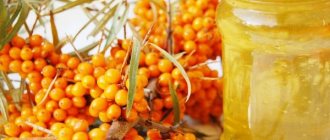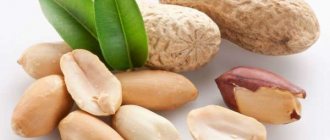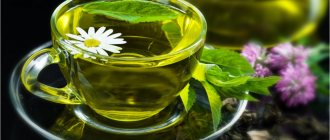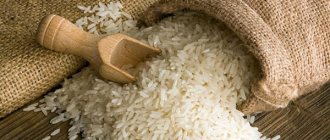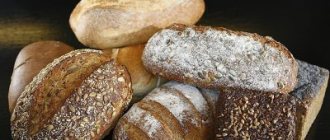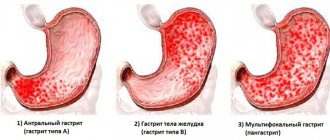When there is inflammation of the gastrointestinal mucosa, it is important to carefully select the diet menu. Connoisseurs of dairy products are concerned with questions: is it possible to eat feta cheese and cheese with gastritis, and if so, what kind? The answer depends on the form of the disease and the nature of the course. For example, in the acute phase, any cheese is prohibited, and during an exacerbation, it is recommended to completely refuse food for the first two days of the attack. Variety in the menu in the form of cheese and cheese dishes is introduced gradually and in small portions.
Cheese for gastritis
Under no circumstances should you eat cheese in the first 2-3 days after an exacerbation. Exacerbations should be understood as periods of chronic complications with high or low acidity and attacks of acute gastritis.
Under no circumstances should you eat cheese in the first 2-3 days after an exacerbation.
On days 3-6, if you feel well, you can eat grated, mild, unsalted and unsmoked cheese, without flavorings or additives. It is advisable to follow such a cheese diet for a few more weeks in order to completely eliminate the negative consequences of the disease.
Processed cheese is strictly contraindicated for gastritis. It is made using citric acid, which will increase the acidity in your stomach and irritate the stomach lining. Moreover, it can increase blood cholesterol, provoke cardiovascular diseases and cause allergies.
Sausage cheese is not allowed for gastritis, like any smoked meats. Essentially, this is the same processed cheese, only additionally smoked, and even with the addition of flavorings to enhance the smoked taste. Homemade goat cheese is also prohibited for gastritis. Despite all its wonderful and beneficial properties, this is a product with high acidity and in our case it will only lead to complications.
Selection rules
In order for cheese to bring maximum benefits to the body, it is necessary to choose it correctly. You need to give preference to natural products.
First of all, you should carefully study the label of the cheese - it should not contain pepper, spices, salt or other flavor enhancers. You need to choose fresh varieties.
Be sure to carefully read the shelf life of cheese. Even the healthiest product that has expired can cause serious harm to the human body.
Cheese is an extremely tasty and healthy product that can be consumed for gastritis with high or high acidity. But you need to be careful when choosing it, and you should also strictly limit the amount of cheese you consume.
Is it possible to eat cheese if you have gastritis?
Dairy product lovers are often tormented by the question: is it possible to eat cheese for gastritis, and if so, which one? The answer in most cases depends on the form of the disease. In acute cases, any type of cheese is prohibited, and during an exacerbation it is advisable to completely refuse food for the first two days. Adding sick cheese and cheese dishes to the menu should be gradual and in small quantities.
In case of exacerbation of certain gastrointestinal pathologies, eating processed and some types of hard cheese is strictly prohibited. The benefit of cheese comes from the 3% mineral components it contains, most of which consist of fluorine and calcium. This product also contains zinc, iron, copper, potassium, iodine, selenium and vitamins B1, B2, B12, C, D, E, PP. These substances are almost completely absorbed in the body of a sick person.
What cheeses are allowed for gastritis:
- hard varieties with a fresh taste and without adding a smoking effect: they have a positive effect on changes in blood pressure. Consumption is permitted in small quantities, and the cheese must be grated;
- blue varieties: popular because they contain beneficial bacteria that actively affect the digestion process and envelop the affected mucous membrane. Due to the high cost of these varieties, there is a possibility of purchasing an expired product, so you need to pay attention to the timing of production and consumption;
- fresh varieties such as Mozzarella, Ricotta, Mascarpone: these soft varieties are more like curd and do not contain spices and are not smoked.
How to eat cheese for gastritis
Cheese for gastritis is recommended to be consumed with extreme caution. Immediately after an exacerbation, any type of product is under strict ban for five days. Next, you can add a small amount of soft, low-fat cheese to your diet, preferably in grated form. But hard foods can easily damage the already delicate walls of the stomach. You also need to pay attention to the fact that the cheese does not contain hot seasonings, large amounts of salt, additives to improve the taste, or preservatives or dyes.
Varieties and benefits
Fermented milk products contain microelements valuable for the body, so they are often included in a variety of diets. Cheeses have a beneficial effect not only on the digestive tract, but also on the nervous system, heart, and immunity. They reduce the risk of developing infectious diseases and cancer.
Cheese is a source of essential vitamins and microelements. It contains about 3% minerals, phosphorus and calcium. Among the useful substances included in the product are also noted: selenium, zinc, potassium and copper. The product is rich in folic acid, which is especially necessary for pregnant women for normal fetal development. Vitamin D in cheese facilitates the absorption of calcium and restores blood supply to the organ damaged by gastritis.
Durum varieties go through a long ripening stage (up to six months). All products of this type are obtained by pressing. They have the following beneficial properties for humans:
- normalize visual functions;
- allow the young body to grow faster (especially in the prenatal period);
- improve brain performance;
- participate in the process of bone formation;
- influence the production of enzymes by the pancreas.
For gastritis, salty and spicy durum varieties are contraindicated. This type of cheese includes:
- Parmesan. It has a brittle texture and delicate taste. The product is recommended to be consumed with herbs or olives.
Soft varieties contain a large amount of milk fat, as well as phosphates and lecithin, which are responsible for the normal digestion of food. The melting point of the product is low, so it is easily absorbed. Soft varieties also contain microelements involved in metabolic processes. They are often melted onto slices of hot bread to make sandwiches.
Among the varieties of soft cheese it should be noted:
- Roquefort with 40-45% fat content.
- Dorogobuzhsky.
- Camembert.
- Smolensky.
What kind of cheese is allowed for gastritis?
The main recommendation that people with gastrointestinal diseases need to remember when choosing cheese: it should under no circumstances be smoked, fatty, spicy or salty. Also, avoid the cheese product - this is not real cheese, but a cheaper analogue made from vegetable fats and preservatives.
Cheese for gastritis should in no case be smoked, fatty, spicy or salty.
In the first three days of exacerbation of gastritis, it is not recommended to eat any type of this dairy product. This refers to attacks of acute gastritis, as well as periods of complications of the chronic form of the disease. On day 4-5, experts allow you to start eating cheese.
A patient with gastritis can only eat mild and unsalted cheeses with a low fat content. At the same time, doctors advise consuming dairy products exclusively in grated form. Follow these recommendations. Within 2 weeks after getting rid of the signs of the disease, you can introduce sliced cheese into your diet.
Feta is among the leaders. This type of original Greek cheese, made from goat or sheep milk, has no contraindications. Moreover, eating it prevents the development of gastrointestinal disorders. It contains bacteria that kill pathogenic microorganisms. You are allowed to eat Mozzarella, Ricotta and dessert Mascarpone. These cheeses are endowed with a slightly fresh taste, so they can be safely consumed in the diet of people with gastrointestinal diseases. In this case, it is not so important whether the patient’s production of hydrochloric acid is increased or decreased.
When answering the question of what kind of cheese can be consumed for gastritis and ulcers, one cannot fail to mention Tofu. For some reason this product is not very popular among our compatriots. And very much in vain. The fact is that its pH balance varies between neutral and alkaline, which gives every reason to talk about the benefits of Tofu for gastritis. However, it should be remembered that soy curd is contraindicated in case of dysbacteriosis.
Separately, I would like to say about feta cheese. This type of cheese is allowed only during remission of stomach ulcers and gastritis. This variety is well absorbed by the body, so in case of chronic gastrointestinal diseases, you can eat lightly salted low-fat cheese. It is worth remembering that its amount in the diet should be minimal.
Comments for July:(47/47)
Magazine → Diet for gastritis.
Girls, tell me exactly what you can eat when gastritis is in full swing, without fear that the attacks will increase. Can I have some fruit, for example bananas?
Macaroni, cheese... Kefir. What is possible, and what is possible, but just a little.
Otherwise I eat macaroni and cheese, kefir... But we still grab a little bit sometimes. But you have to eat...
I drank baby fennel tea with sugar. It hurt a little, so I think it’s from him or from the pasta.
05 September at 14:18
Similar posts on the topic Diet for gastritis.
Almost everyone has heard about gastritis; it is a fairly common stomach disease, including in children.
Mother's nutrition during breastfeeding. Basic principles, myths, conclusions. Nutrition for a nursing woman - the basics.
Nutrition while breastfeedingjust an interesting article Girls feeding breast milk! I found inte.
There’s not much you can do there =((I’m suffering myself right now... only I have a whole bouquet(
In general, I can’t eat for several days during an exacerbation...
Oatmeal... If it sticks, then you can simply brew a couple of spoons in boiling water, let it sit and drink this infusion, it envelops... from fruits only bananas and maybe also apples, but only baked ones. Non-sour kefir, low-fat cottage cheese... jelly, but not made from sour berries..
I ate mashed potatoes, seaweed without dressing, baby meat puree, and baby pates.
At the age of 19 I had gastritis and 2 ulcers (I loved cola and chips)))
In general, I was on a diet for half a year, I don’t remember the whole list, but I remember that there were porridges and a lot of porridges. chocolate, soda, mayonnaise, etc. - in the trash! boiled chicken meat, mashed potatoes, vegetables and fruits, but not all, some provoke gastritis.
I think milk wasn’t allowed... but I don’t remember exactly..
Eating cheese for gastritis in the acute and remission stages
Cheese for gastritis in the acute stage is not consumed. Cheese can be a “heavy” food due to the significant amount of protein and a number of other components in its composition. During the period of remission, you can eat cheese without fear if you have gastritis, if restrictions on the variety and volume of the product are observed. However, in the presence of concomitant diseases, caution is needed. Thus, patients with disorders of the pancreas do not always tolerate the use well - this, in a chronic process, is associated with a lack of enzymes required for digestion.
In addition, people with liver and gallbladder pathologies may react with nausea and other unfavorable symptoms to eating cheese. In such cases, low-fat varieties are selected or the product is completely excluded from the diet plan. It is also worth limiting consumption if you have diseases of the heart and blood vessels.
Cheese for gastritis in remission can be eaten starting with small portions. Do not combine with baked goods or sweets. Choosing low-fat varieties without additives. Cheese can be consumed as an independent product (for example, as a snack) or in combination with any other food. However, for gastritis, it is absolutely incompatible with alcohol - not because it causes adverse reactions, but because alcohol can harm the stomach.
You should not serve buns or pies with a lot of cheese filling. However, this product can be cut up and offered for tea (without cookies made from shortbread or other “heavy” dough), combined with fruits, vegetables, fish, meat (allowed in the diet). You can eat it every day, observing quantity restrictions.
Sandwiches made from suitable types of bread are allowed (preferably day-old, white), if tolerated - with a thin layer of natural butter. Soft cheeses should not be too salty or moist. They go well with fruits and vegetables, but it is best to avoid eating them with large quantities of any baked goods (even if we are talking about crackers or hard bagels).
What to cook
Dishes made from cottage cheese are characterized by great variety and excellent taste, of course, if you cook them with soul.
Syrniki
Boil 1 cup of rice until half cooked, add 250 g of crushed curd mass, 3 eggs, 50 g of sugar, a pinch of salt. Mix all the ingredients thoroughly, form them into flat cakes and put them in the oven. Cook cheesecakes at 180 degrees until golden brown.
Casserole
To 400 g of grated cottage cheese add 50 g of soft butter, 2 grated boiled carrots, 2 eggs, 30 g of sugar, a pinch of salt. Mix all the ingredients into a homogeneous mass, place in a mold and bake for about half an hour at 180 degrees.
Souffle
Mix 300 g of curd paste, 2 bananas mashed with a fork, 2 eggs, 1 tablespoon of semolina, 50 g of sugar. We put the mixture in the mold, put it in a steam bath and bring it to readiness.
You can add permitted vegetables, fruits, and minced meat to casseroles and soufflés.
A portion of raw cottage cheese should be 150-200 g per day every day . Restrictions on heat-treated cottage cheese are not so strict. In the absence of serious kidney disease, you can eat it, focusing on your well-being.
The time of day when you are allowed to eat curd products largely depends on your lifestyle and the chosen recipe. More nutritious dishes with the addition of meat and vegetables are best eaten in the first half of the day, when digestion processes are more active. You can eat cottage cheese for breakfast if you have a busy day at work and there is no opportunity to be distracted by snacks.
If you eat often enough, you can have a “cottage cheese” lunch at 10-11 a.m. or an afternoon snack at 4-5 p.m. In the evening, it is better to eat low-fat cottage cheese without calorie additives, no later than 3 hours before going to bed.
What cheeses are allowed to be consumed for gastritis with high acidity
For different types of disease, fatty foods are strictly prohibited. In case of gastritis with increased acidity, it is recommended to refuse this dairy product altogether, or add a small amount of cheese with an acid level to the diet Osti above 4.6. For convenience, this parameter will be indicated next to all described cheese products.
For gastritis with high acidity, you also need to choose low-fat varieties, but the acidity threshold can be reduced to 4. For a gentle diet, cheeses with a fat content of up to 2% are ideal and increased acidity of gastric juice), or up to 5% (with reduced acidity).
Feta cheese for gastritis with high acidity
One of the few drinks that does not lose its taste even in low-fat form. This type of fresh cheese can be eaten with green salads or spread directly on croutons. An excellent substitute for feta can be tofu (soy cheese, which does not contain any dairy products at all).
During the period of remission, you can eat cheese without fear if you have gastritis if restrictions on the variety and volume of the product are observed
Feta will be beneficial for the stomach only if it is made without adding goat milk.
Ricotta cheese for gastritis with high acidity
A type of fresh cheese with low fat content. Due to the fact that the product is made from whey and not whole milk, it can be consumed with both increased and decreased acidity. pH is 5.5. Ricotta can be mixed with berries, fruits and honey. Also, based on this type of cheese, you can prepare a delicious dietary soup.
Mozzarella cheese for gastritis with high acidity
Low-fat mozzarella is very easy to find even in the smallest stores. The pH level is 4.9. This type of cheese melts perfectly, so you can eat it for both esophagitis and ulcers.
What cheese should you not eat if you have gastritis?
The list of cheeses that you should not eat if you have gastritis is quite long. This list includes all cheese products that taste too sour, spicy or salty. The main thing for a patient with gastritis when consuming different types of cheese and dishes prepared from them is to monitor subjective sensations. After all, each organism is individual and it may happen that even permitted soft, non-acidic cheeses will cause heartburn in some people.
Processed and sausage cheese for gastritis
Processed cheese is prepared with the addition of a significant amount of spices. Since cottage cheese and butter are also added to the cheese product, its pungency may not be noticed at first. But, one way or another, this cheese will cause an increase in acidity in the stomach and provoke irritation of its mucous membrane.
Sausage cheese is smoked, so it is part of the prohibited products for gastritis
Sausage cheese is smoked, so it is included in the prohibited products for gastritis.
Goat cheese for gastritis
Goat's milk cheeses have an appetizing appearance and the color resembles white or grayish cream. In addition, goat cheese is very healthy: it contains a lot of calcium, thiamine, and suppresses the development of pathogenic flora. But even the highest quality varieties are dangerous for patients with gastritis, since they have a pronounced sour taste. By eating goat cheese, you can unwittingly provoke an exacerbation of the disease.
Cheese "Suluguni" for gastritis
“Suluguni” is strictly prohibited for patients with gastritis and stomach ulcers. It is prepared by smoking and can seriously harm the inflamed mucous membrane of the digestive organs. Patients with gastritis often have a question: can they eat cheesecakes? If the cheesecakes are steamed from unleavened (non-acidic) cottage cheese and approved types of cheese, then you can occasionally enjoy this dish.
Is it possible to have Adyghe cheese for gastritis?
Adyghe cheese, having a rich taste of yogurt, has a rich chemical composition. Thus, this product is rich in vitamins of various groups, phosphorus, calcium, other micro- and macroelements, and essential amino acids. The benefits of the product for pregnant women and new mothers during lactation, for the elderly and children are undeniable.
The low percentage of fat content (about 40 percent), low amount of calories and low salt concentration allow Adyghe cheese to be included in the diet of people suffering from gastrointestinal diseases. Acting as a “relative” of feta cheese, Adyghe cheese is an excellent source of easily digestible protein and is optimally suited for the diet for diseases of the gastrointestinal tract.
The consumption of Adyghe cheese at the stage of exacerbation of gastritis is strictly prohibited. However, this ban applies to a period of three days. After this time, that is, on the 4th and subsequent days after an exacerbation of the disease, patients are allowed to consume Adyghe cheese, taking into account certain nuances.
Gastroenterologists after an attack of exacerbation of gastritis recommend consuming cheese only in crushed (grated) form. Moreover, it can be present in the diet only as a component in a dish (for example, as an ingredient in a salad) or as an additional, but not the main dish.
After two weeks from the date of exacerbation, provided there are no symptoms characteristic of the disease, the patient can enrich the diet with sliced Adyghe cheese.
Recipes for preparing cheese dishes for gastritis
There are a large number of cheese-based recipes that are allowed for gastritis. Cheeses go well with vegetables, fruits, and herbs. You need to choose non-acidic fruits, for example, pears, bananas, sweet varieties of apples. It is advisable to eat vegetables in heat-treated form.
Cheese soup for gastritis recipe
Boil three liters of water. Peel and cut the vegetables into cubes, throw them into boiling water, and cook for a quarter of an hour. Grate the cheeses and melt them in a microwave oven or in a water bath. Add cheese to vegetables, cook for another quarter of an hour. Finely chop the dill, parsley and spinach, add to the soup, wait until it boils and remove from the heat. You should not eat the soup too hot, so as not to provoke an exacerbation of gastritis.
Ingredients of cheese soup: two medium potatoes; one carrot; one celery; 100 mg dor blue cheese; 100 mg low-fat hard cheese; 100 grams of spinach; dill and parsley.
Cheese plate for gastritis recipe
This is a win-win snack option on the holiday table. The minimum cheese plate should contain 4 types of cheese, which is complemented with your choice of fruits, nuts or honey. We offer our own version of a cheese plate that is safe for people with gastritis.
Ingredients of the cheese plate: 150 grams of each type of cheese: mozzarella, unsalted feta cheese, Gaudette, edamer, dor blue; 30 grams of honey with the addition of pine nuts; one small pear.
Sources:
- https://chtomozhno.ru/pitanie-pri-gastrite/mozhno-li-adygejskij-syr-pri-gastrite.html
- https://gastrox.ru/diet/syr-pri-gastrite.html
- https://gastritlechim.ru/gastrit/pitanie/mozhno-li-est-raznye-vidy-syra-pri-gastrite.html
- https://gastritunet.online/bolezni-zheludka/gastrit/lechenie-g/dieta/syr-pri-gastrite.html
- https://zhkt.ru/zheludok/gastrit/eda/mozhno-li-syr.html
- https://biohimik.net/molochnye-produkty-pri-gastrite/syr-pri-gastrite
- https://medbrat.online/zheludok/gastrit/pitanie/syr.html
- https://mi-msk.ru/eda/molochnoe/syr-pri-gastrite.html
Post Views: 1,590

